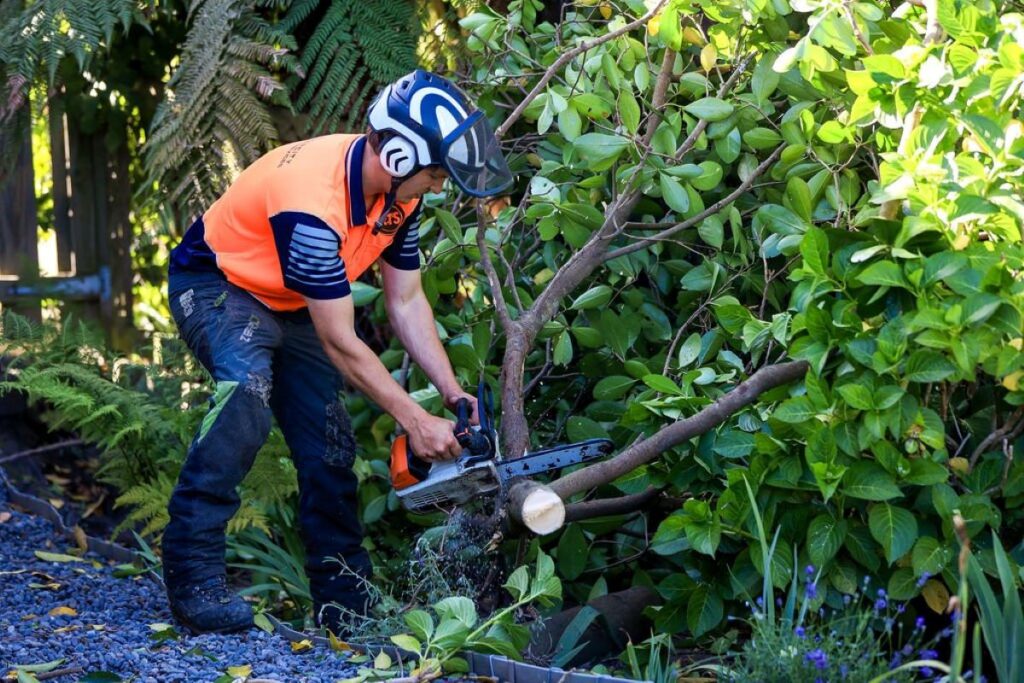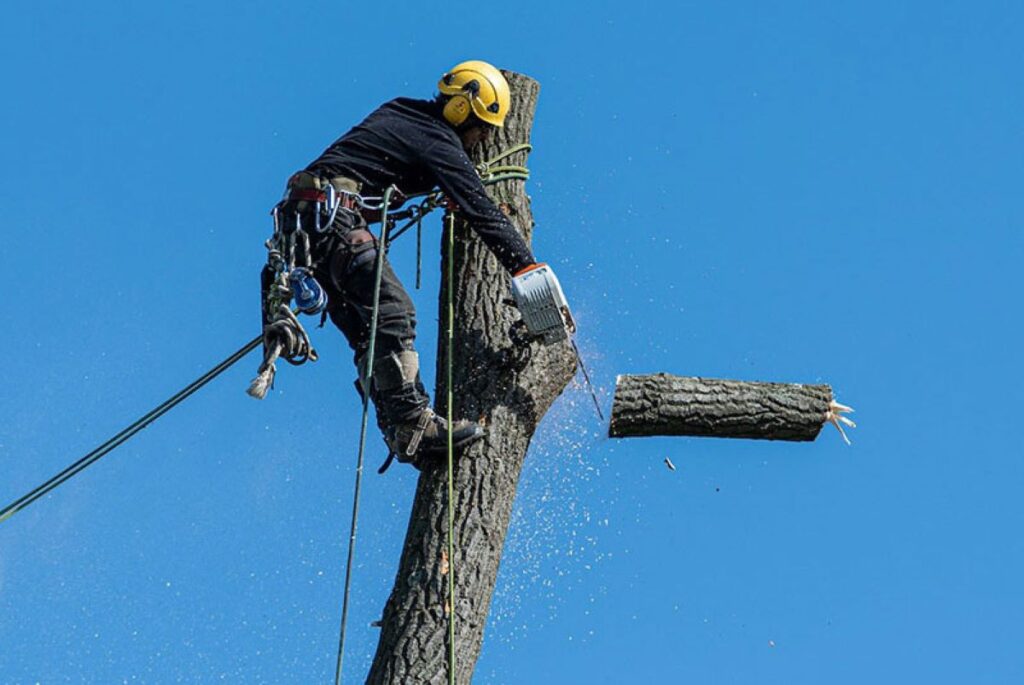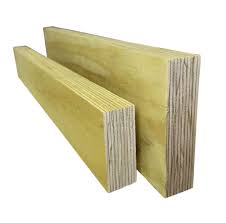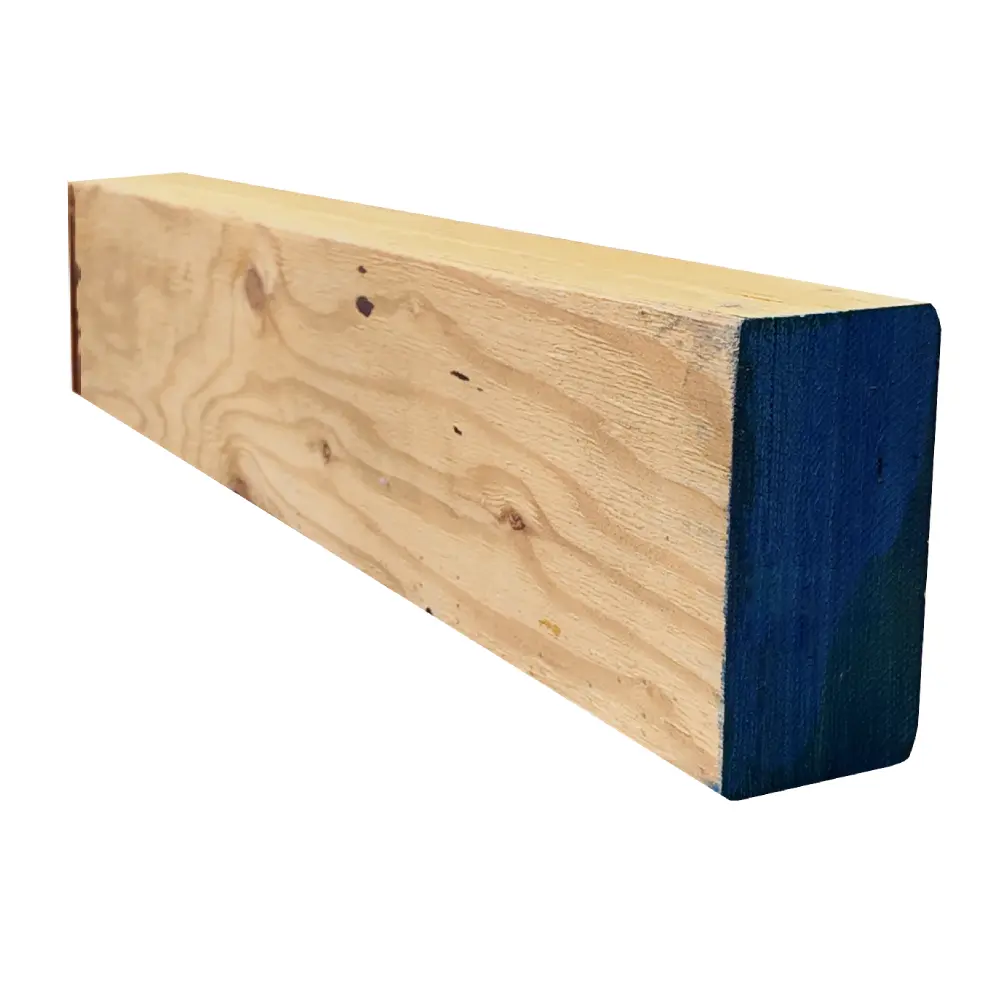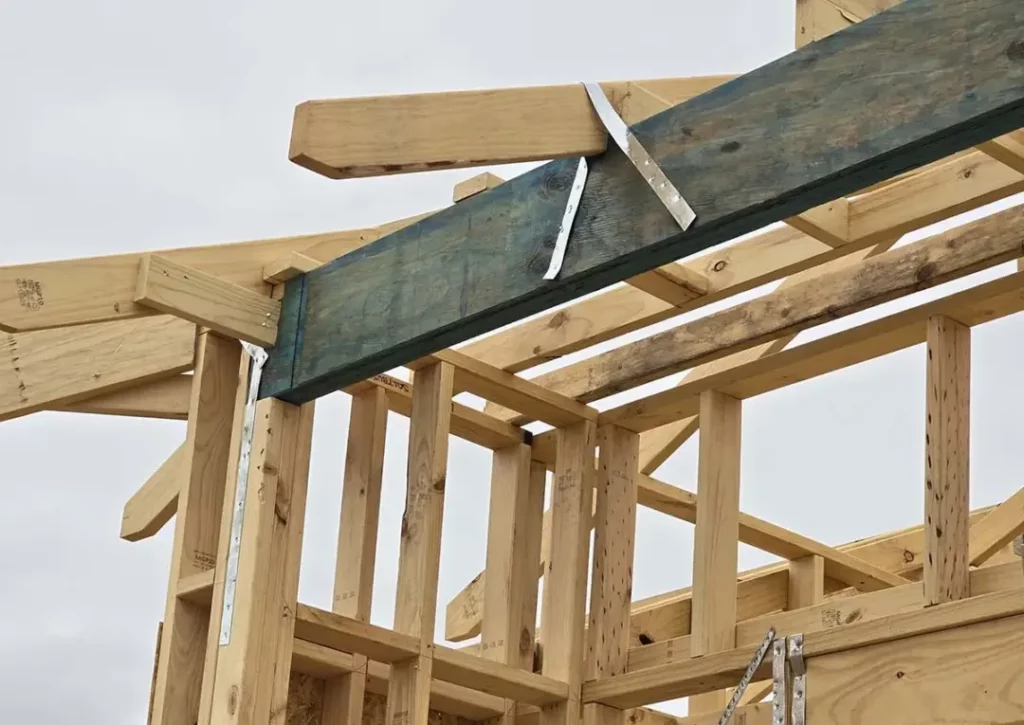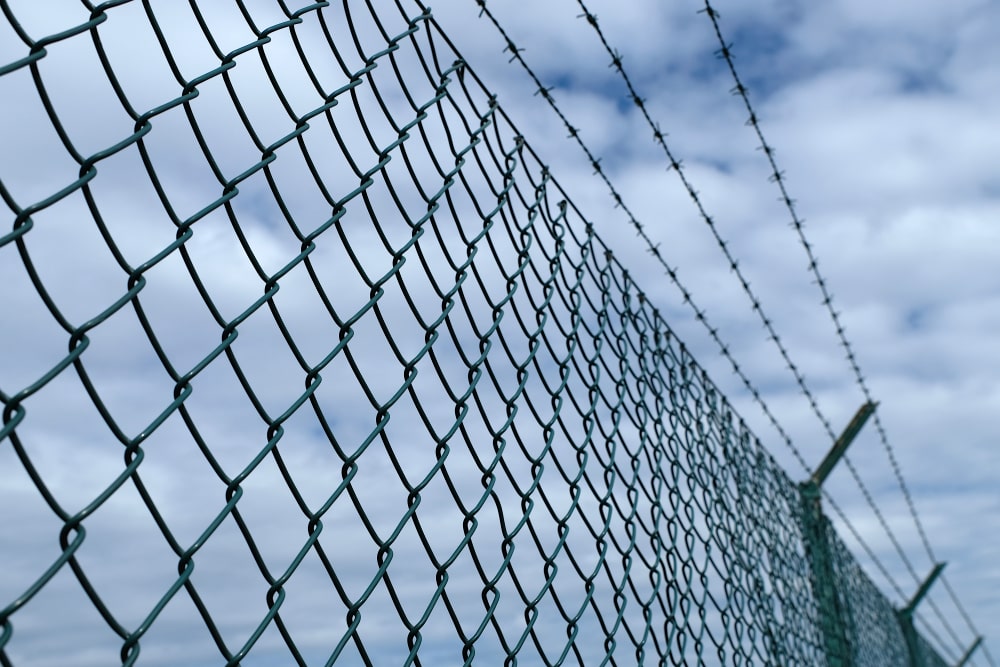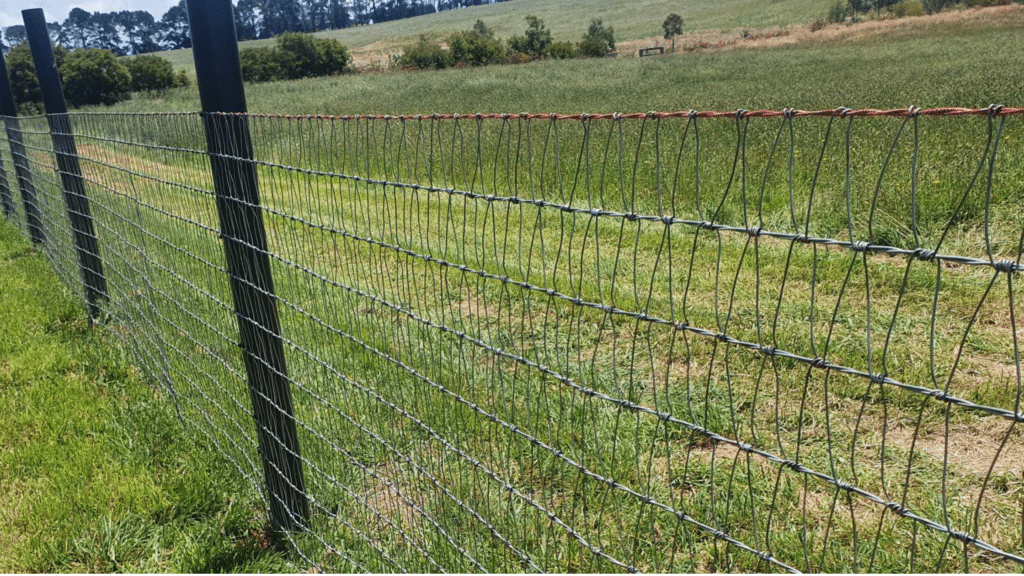Why a Double Bay Buyers Agent Is Often Involved in Quiet Transactions
Why a Double Bay Buyers Agent Is Often Involved in Quiet Transactions
Double Bay’s property market is as exclusive as it is dynamic, with a growing trend towards quiet transactions. The allure of discreet property dealings is noticeable in recent statistics and expert insights, making the role of a buyers agent more crucial than ever. This guide explores why a Double Bay buyers agent is frequently involved in quiet transactions, and what buyers and sellers need to know about this emerging trend.
The Rise of Off-Market Sales in Sydney
Understanding Off-Market Sales
Off-market sales are becoming an essential part of Sydney’s property narrative. These private transactions bypass traditional listing avenues, keeping the sale away from public scrutiny. This approach appeals to high-end buyers and sellers who value discretion and exclusivity, a trend particularly influential in areas like Double Bay buyers agent.
Recent research revealed that in 2024, more than 20% of Sydney property sales were conducted off-market. Such transactions are gaining traction, reflecting a shift in buyer and seller expectations where privacy is paramount. Savvy property owners are increasingly turning to specialised agents to execute these confidential deals without disrupting the public market.
The method appeals to both buyers and sellers. Sellers can avoid the stress of public exposure, while buyers enjoy discreet negotiations and access to properties with less competition. This trend highlights the crucial role of a buyers agent, who navigates these quiet markets with expert precision.
Expert Insight and Market Dynamics
Stewart Chung, a Commercial Residential Property Asset Development Manager, emphasised the strategic importance of off-market sales. According to his observations, the move towards privacy in property transactions has been significant. His insight underlines that a sophisticated and connected buyers agent is a must-have in facilitating these nuanced transactions.
Market dynamics in high-end suburbs like Double Bay favour discreet dealings, often involving bespoke agreements that require a deep understanding of client needs and market trends. By leveraging insider knowledge, buyers agents can secure opportunities before they hit the conventional market, ensuring that both buyers and sellers are privy to the most recent, exclusive offers available.
The delicate balance of quiet transactions demands thorough research, robust negotiation skills, and an intimate knowledge of local property trends. Buyers agents excel in these areas, thus becoming the linchpins of modern and discreet property transactions in Sydney’s premium markets.
How Buyers Agents Enhance Discretion
The Role of a Buyers Agent
Buyers agents in Double Bay serve as trusted intermediaries between clients and the market. They help buyers navigate a complex landscape where properties are rarely advertised publicly. Their discreet approach ensures that transactions are managed off-market and tailored to meet individual privacy needs.
One of the most significant benefits of engaging a buyers agent is their ability to identify off-market opportunities. Their longstanding relationships and local expertise mean that they often hear about listings before they are made public. This early access provides clients with a competitive edge, especially in a crowded market where every advantage counts.
Additionally, buyers agents offer guidance throughout the process, from initial enquiries to final negotiations. Their hands-on experience in handling discreet deals means that they can navigate potential pitfalls, ensuring that every aspect of the transaction remains confidential and exactly meets the client’s expectations.
Privacy and Confidentiality in Transactions
Privacy is at the heart of off-market transactions, and a buyers agent is instrumental in maintaining that level of discretion. With sensitive financial information and personal details in play, ensuring confidentiality is crucial. Buyers agents are adept at managing these issues, protecting client interests at every stage of the process.
The discreet nature of these transactions often means that details are shared only on a need-to-know basis. Buyers agents work directly with trusted contacts and utilise exclusive networks to keep negotiations under wraps. This streamlined and carefully managed process minimises the risk of unwanted publicity or speculation in the market.
This focus on privacy is particularly important in high-profile areas, where every news leak can impact market perceptions and eventual sale prices. A buyers agent’s expertise in handling such sensitive matters provides invaluable peace of mind for both buyers and sellers, ensuring that transactions are as seamless as they are private.
The Impact of Commission Changes on Buyers Agents
Changes in Real Estate Commissions
Recent developments within the real estate sector have also influenced how buyers agents operate. A notable change is the National Association of Realtors’ settlement effective from August 17, 2024, which prohibits listing brokers from offering compensation to buyer agents on the MLS. This fundamental shift in commission structures has significant implications for how buyers agents earn their fees.
The new commission model means that buyers agents must adapt their business strategies. They now need to offer additional and often more comprehensive services to justify their commission, especially when handling off-market deals where the bargaining power shifts more towards the client. This change encourages a more transparent and service-focused approach, ultimately benefiting both buyers and sellers.
In response to these shifts, buyers agents have increased their emphasis on bespoke consultancy services. They now invest more time in market research, targeted property searches, and personalised marketing strategies that add value to their offerings. This change is particularly beneficial in high-stake markets like Double Bay where each transaction can involve substantial sums of money and sensitive personal data.
Conflicts of Interest in Traditional Sales
Another emerging concern involves potential conflicts of interest within the traditional property sales model. Studies indicate that real estate agents often secure transaction prices for their own homes that are approximately 2–4 per cent higher than those achieved for their clients’ properties. This discrepancy raises questions about the integrity of the process in conventional sales.
With a buyers agent in the mix, the client can rest assured that their interests come first. These agents work exclusively for the buyer, offering unbiased advice that ensures transactions are conducted fairly and in accordance with the client’s best interests. Their compensation structures are designed to eliminate conflicts of interest, making them a more appealing option for discreet property transactions.
By acting solely on behalf of the buyer, the agents provide a level of transparency not always found in traditional sales. Their focus remains on securing the best deal possible, avoiding any breed of self-interest that could otherwise compromise the transaction. This clear separation of interests reassures buyers trying to avoid situations where agents might prioritise personal gain over optimal outcomes for their clients.
Bespoke Services for High-End Clients in Double Bay
Tailored Property Searches
Double Bay is known for its luxurious homes and exclusive properties. Buyers agents specialising in this area offer tailored property searches that cater to high-end clients’ exacting requirements. These agents leverage extensive local market knowledge to provide clients with customised property lists, often including off-market treasures not available to the general public.
This approach ensures that every property shown aligns perfectly with the buyer’s specific criteria, such as location, architectural style, and overall lifestyle needs. Consequently, clients enjoy a selection of properties that might otherwise pass unnoticed within the conventional market framework.
The experience and networks of these buyers agents mean that properties are evaluated with a discerning eye, ensuring that every potential purchase is thoroughly vetted. This level of scrutiny not only enhances the buying experience but also solidifies trust between the agent and the client, a critical aspect in maintaining long-term relationships in the luxury property sector.
Discreet Negotiation Strategies
Negotiation in quiet transactions requires a nuanced approach-one that is informed by an understanding of the client’s needs and prevailing market conditions. Buyers agents in Double Bay are known for their skilful negotiation techniques, ensuring that transactions remain confidential and beneficial to all parties involved.
Discreet negotiations involve tactful communication and careful handling of sensitive information. Agents work behind the scenes to secure competitive pricing and conditions that best serve their clients’ interests, all while keeping details out of the public domain. Their expertise in balancing assertiveness with diplomacy often makes the difference between an acceptable and an outstanding deal.
Often, buyers agents utilise a network of trusted industry contacts to facilitate these negotiations. This approach reduces the risk of leakage and maximises privacy, ensuring that both parties are comfortable with the arrangement. The result is a win-win situation where the client’s financial and privacy needs are both satisfactorily addressed.
Personalised Service and Relationship Building
Referrals and Trusted Relationships
Trust is the cornerstone of any successful property transaction, particularly in high-stakes markets like Double Bay. A striking statistic reveals that 66% of sellers used an agent referred by a friend, neighbour, or relative. This statistic highlights how critical referrals and trusted relationships are in the current real estate ecosystem.
Buyers agents invest considerable effort in cultivating long-term relationships with both clients and industry insiders. They build networks based on mutual trust and understanding. These connections often result in early access to exclusive listings, further reinforcing the benefits of working with a specialist in quiet transactions.
Personalised service in the realm of off-market deals is not just a luxury; it is a necessity. Buyers agents provide one-on-one consultancy, ensuring that every facet of the transaction is tailored specifically to the client’s needs. This level of attention helps clients feel valued and understood, significantly easing the inherent anxieties associated with making such a high-value purchase.
The Importance of Ongoing Communication
The process of securing a property – especially through off-market channels – is dynamic and requires constant updates and adjustments. Buyers agents prioritise regular communication, ensuring that their clients are informed at every stage of the process. This constant feedback loop prevents surprises and builds confidence in the agent’s expertise.
Effective communication involves not only discussing progress but also sharing insights into market trends and strategic advice. Agents provide detailed updates about potential opportunities, comparable recent sales, and market shifts that might influence the transaction. With such clear channels of dialogue, clients can make informed decisions without feeling overwhelmed.
This transparent communication is invaluable in maintaining trust and delivering results. Buyers agents who excel in this area ensure that their clients are not only up-to-date but also thoroughly prepared for any eventuality that arises during the negotiation and purchase process.
Legal and Financial Considerations in Quiet Transactions
Navigating Regulatory Changes
Regulatory adjustments, such as the revised commission practices mandated by the National Association of Realtors, are reshaping how property transactions are conducted. Buyers agents play a critical role in helping clients navigate these changes, ensuring that all aspects of the transaction comply with current legal standards.
These regulatory changes add a layer of complexity to property deals. Buyers agents offer guidance to ensure that contractual documents, disclosures, and negotiation terms meet legal requirements. Their expert handling of these matters reduces the risk of disputes or delays, thereby providing a smoother transaction process.
In cases where regulatory shifts might affect transaction dynamics, buyers agents help clients understand the implications for their purchase. By staying current with legislative updates and industry standards, they safeguard the interests of buyers while keeping the process as seamless as possible. This meticulous attention to detail is paramount in avoiding future complications.
Financial Strategies and Investment Potential
Quiet transactions often involve bespoke financial strategies tailored to individual investor profiles. In a city like Sydney, where property values are continually evolving, buyers agents bring an added advantage. They provide insights into future investment potentials and redevelopment opportunities in sought-after locations like Double Bay.
Having deep market insight, buyers agents can help buyers navigate financing options and investment strategies that might not be immediately apparent in standard transactions. These strategies often include approaches to minimise tax liabilities, maximise returns, and secure favourable loan conditions. By identifying properties with high investment potential, agents ensure that every decision is both financially sound and aligned with the client’s long-term goals.
For high-net-worth individuals, understanding the intricate landscape of property investment is essential. Buyers agents are equipped with the tools and expertise to conduct thorough financial analyses, allowing clients to gauge the value of off-market properties accurately. Their personalised guidance often transforms a complex investment process into an achievable and rewarding endeavour.
Case Studies and Real-Life Examples
Successful Off-Market Deals in Double Bay
There are numerous instances where buyers agents have secured off-market deals that far exceeded expectations. For example, a well-connected Double Bay buyers agent recently facilitated a quiet transaction where the purchase process remained entirely confidential from initial contact to completion.
In this case, both buyer and seller benefited from the arrangement; the seller achieved an optimal sale without public exposure, while the buyer was able to purchase a highly coveted property with minimal competition. The agent’s understanding of the local network, combined with meticulous attention to legal and financial details, ensured a smooth and successful deal.
These success stories underscore the value that a specialised buyers agent brings to quiet transactions. They exemplify how discretion, insider knowledge, and strategic negotiation can deliver exceptional outcomes for clients in Double Bay.
Comparing Traditional Listings with Off-Market Deals
Comparing properties sold via traditional public listings with those sold off-market reveals notable differences. Traditional listings often involve extensive marketing efforts, open houses, and significant public exposure. In contrast, off-market deals bypass many of these time-consuming and invasive elements.
Off-market properties typically offer buyers a degree of exclusivity and privacy that is hard to come by through traditional channels. The process ensures that only selective, well-vetted buyers are involved. Buyers agents play an essential role in managing this transition, carefully vetting potential buyers and maintaining the confidential nature of the deal.
This tailored process, managed by a knowledgeable agent, often results in a smoother transaction with fewer complications. The quality of the deal is enhanced by personalised service and a focus on maintaining confidentiality throughout, features that are highly valued in high-end markets like Double Bay.
Conclusion: The Future of Discreet Property Transactions
Ongoing Trends in Off-Market Sales
Off-market sales are not just a fleeting trend, but a fundamental shift in the property market landscape. With over 20% of Sydney property transactions occurring off-market in 2024, discretion and privacy are becoming central to many buyers’ and sellers’ strategies. This movement has only increased the importance of specialised buyers agents who can seamlessly navigate these quiet transactions.
The trend is set to continue as property owners seek to tailor their sales process to meet personal and financial needs in an ever-competitive market. Maintaining privacy while ensuring a fair deal requires expertise, sensitivity, and precision-qualities embodied by top Double Bay buyers agents.
The move towards quiet transactions not only reflects a growing preference for discretion but also marks a shift in how property professionals operate. Buyers agents are now more integral than ever in balancing the needs of clients with the realities of a complex, dynamic market.
Empowering Buyers with Expert Guidance
A savvy buyers agent provides a level of service that extends beyond simple matchmaking through property listings. They empower buyers by offering personalised advice, ensuring every aspect of the transaction is managed with utmost confidentiality and care. Clients benefit from a more transparent and honest process-one that prioritises their long-term interests over quick wins.
This shift towards client-centric practices is likely to reshape the property market as buyers become more informed and demanding of personalised service. Expert guidance from a trusted buyers agent helps navigate all facets of off-market sales, from discreet negotiations to detailed legal and financial advice, ensuring a comprehensive and satisfying transaction experience.
The future of discreet property transactions lies in trust, expertise, and a commitment to client service. Buyers agents in Double Bay are uniquely positioned to deliver on this promise, offering an unmatched blend of local knowledge, pivotal market insights, and personalised service that is tailored to modern, discerning buyers.
Final Thoughts on the Changing Landscape
The transformation of the property market has left an indelible mark on how high-end transactions are handled. From significant regulatory changes affecting commission structures to an increasing preference for off-market sales, the shifts are both profound and lasting. Buyers agents, especially those operating in prestigious areas like Double Bay, have adapted by evolving into trusted advisors who manage every detail with perfection.
These agents provide the perfect combination of discretion, expertise, and personalised service that drives successful off-market deals. Whether you are a buyer or a seller looking for a seamless, private transaction, understanding the role and value of a buyers agent is critical.
As the market continues to evolve, the importance of expert, confidential guidance will only grow. Engaging a trusted Double Bay buyers agent now provides the competitive edge needed in a shifting market-a decision that could be the difference between a good property deal and an exceptional one.Double Bay’s property market is as exclusive as it is dynamic, with a growing trend towards quiet transactions. The allure of discreet property dealings is noticeable in recent statistics and expert insights, making the role of a buyers agent more crucial than ever. This guide explores why a Double Bay buyers agent is frequently involved in quiet transactions, and what buyers and sellers need to know about this emerging trend.
The Rise of Off-Market Sales in Sydney
Understanding Off-Market Sales
Off-market sales are becoming an essential part of Sydney’s property narrative. These private transactions bypass traditional listing avenues, keeping the sale away from public scrutiny. This approach appeals to high-end buyers and sellers who value discretion and exclusivity, a trend particularly influential in areas like Double Bay.
Recent research revealed that in 2024, more than 20% of Sydney property sales were conducted off-market. Such transactions are gaining traction, reflecting a shift in buyer and seller expectations where privacy is paramount. Savvy property owners are increasingly turning to specialised agents to execute these confidential deals without disrupting the public market.

The method appeals to both buyers and sellers. Sellers can avoid the stress of public exposure, while buyers enjoy discreet negotiations and access to properties with less competition. This trend highlights the crucial role of a buyers agent, who navigates these quiet markets with expert precision. You may visit https://shalepropertyrights.com/how-buyers-advocacy-dover-heights-supports-buyers-in-prestige-suburbs/ to learn about how buyers advocacy dover heights supports buyers in prestige suburbs
Expert Insight and Market Dynamics
Stewart Chung, a Commercial Residential Property Asset Development Manager, emphasised the strategic importance of off-market sales. According to his observations, the move towards privacy in property transactions has been significant. His insight underlines that a sophisticated and connected buyers agent is a must-have in facilitating these nuanced transactions.
Market dynamics in high-end suburbs like Double Bay favour discreet dealings, often involving bespoke agreements that require a deep understanding of client needs and market trends. By leveraging insider knowledge, buyers agents can secure opportunities before they hit the conventional market, ensuring that both buyers and sellers are privy to the most recent, exclusive offers available.
The delicate balance of quiet transactions demands thorough research, robust negotiation skills, and an intimate knowledge of local property trends. Buyers agents excel in these areas, thus becoming the linchpins of modern and discreet property transactions in Sydney’s premium markets.
How Buyers Agents Enhance Discretion
The Role of a Buyers Agent
Buyers agents in Double Bay serve as trusted intermediaries between clients and the market. They help buyers navigate a complex landscape where properties are rarely advertised publicly. Their discreet approach ensures that transactions are managed off-market and tailored to meet individual privacy needs.
One of the most significant benefits of engaging a buyers agent is their ability to identify off-market opportunities. Their longstanding relationships and local expertise mean that they often hear about listings before they are made public. This early access provides clients with a competitive edge, especially in a crowded market where every advantage counts.
Additionally, buyers agents offer guidance throughout the process, from initial enquiries to final negotiations. Their hands-on experience in handling discreet deals means that they can navigate potential pitfalls, ensuring that every aspect of the transaction remains confidential and exactly meets the client’s expectations.
Privacy and Confidentiality in Transactions
Privacy is at the heart of off-market transactions, and a buyers agent is instrumental in maintaining that level of discretion. With sensitive financial information and personal details in play, ensuring confidentiality is crucial. Buyers agents are adept at managing these issues, protecting client interests at every stage of the process.
The discreet nature of these transactions often means that details are shared only on a need-to-know basis. Buyers agents work directly with trusted contacts and utilise exclusive networks to keep negotiations under wraps. This streamlined and carefully managed process minimises the risk of unwanted publicity or speculation in the market.
This focus on privacy is particularly important in high-profile areas, where every news leak can impact market perceptions and eventual sale prices. A buyers agent’s expertise in handling such sensitive matters provides invaluable peace of mind for both buyers and sellers, ensuring that transactions are as seamless as they are private.
The Impact of Commission Changes on Buyers Agents
Changes in Real Estate Commissions
Recent developments within the real estate sector have also influenced how buyers agents operate. A notable change is the National Association of Realtors’ settlement effective from August 17, 2024, which prohibits listing brokers from offering compensation to buyer agents on the MLS. This fundamental shift in commission structures has significant implications for how buyers agents earn their fees.
The new commission model means that buyers agents must adapt their business strategies. They now need to offer additional and often more comprehensive services to justify their commission, especially when handling off-market deals where the bargaining power shifts more towards the client. This change encourages a more transparent and service-focused approach, ultimately benefiting both buyers and sellers.
In response to these shifts, buyers agents have increased their emphasis on bespoke consultancy services. They now invest more time in market research, targeted property searches, and personalised marketing strategies that add value to their offerings. This change is particularly beneficial in high-stake markets like Double Bay where each transaction can involve substantial sums of money and sensitive personal data.
Conflicts of Interest in Traditional Sales
Another emerging concern involves potential conflicts of interest within the traditional property sales model. Studies indicate that real estate agents often secure transaction prices for their own homes that are approximately 2–4 per cent higher than those achieved for their clients’ properties. This discrepancy raises questions about the integrity of the process in conventional sales.
With a buyers agent in the mix, the client can rest assured that their interests come first. These agents work exclusively for the buyer, offering unbiased advice that ensures transactions are conducted fairly and in accordance with the client’s best interests. Their compensation structures are designed to eliminate conflicts of interest, making them a more appealing option for discreet property transactions.
By acting solely on behalf of the buyer, the agents provide a level of transparency not always found in traditional sales. Their focus remains on securing the best deal possible, avoiding any breed of self-interest that could otherwise compromise the transaction. This clear separation of interests reassures buyers trying to avoid situations where agents might prioritise personal gain over optimal outcomes for their clients.
Bespoke Services for High-End Clients in Double Bay
Tailored Property Searches
Double Bay is known for its luxurious homes and exclusive properties. Buyers agents specialising in this area offer tailored property searches that cater to high-end clients’ exacting requirements. These agents leverage extensive local market knowledge to provide clients with customised property lists, often including off-market treasures not available to the general public.
This approach ensures that every property shown aligns perfectly with the buyer’s specific criteria, such as location, architectural style, and overall lifestyle needs. Consequently, clients enjoy a selection of properties that might otherwise pass unnoticed within the conventional market framework.
The experience and networks of these buyers agents mean that properties are evaluated with a discerning eye, ensuring that every potential purchase is thoroughly vetted. This level of scrutiny not only enhances the buying experience but also solidifies trust between the agent and the client, a critical aspect in maintaining long-term relationships in the luxury property sector.
Discreet Negotiation Strategies
Negotiation in quiet transactions requires a nuanced approach-one that is informed by an understanding of the client’s needs and prevailing market conditions. Buyers agents in Double Bay are known for their skilful negotiation techniques, ensuring that transactions remain confidential and beneficial to all parties involved.
Discreet negotiations involve tactful communication and careful handling of sensitive information. Agents work behind the scenes to secure competitive pricing and conditions that best serve their clients’ interests, all while keeping details out of the public domain. Their expertise in balancing assertiveness with diplomacy often makes the difference between an acceptable and an outstanding deal.
Often, buyers agents utilise a network of trusted industry contacts to facilitate these negotiations. This approach reduces the risk of leakage and maximises privacy, ensuring that both parties are comfortable with the arrangement. The result is a win-win situation where the client’s financial and privacy needs are both satisfactorily addressed.
Personalised Service and Relationship Building
Referrals and Trusted Relationships
Trust is the cornerstone of any successful property transaction, particularly in high-stakes markets like Double Bay. A striking statistic reveals that 66% of sellers used an agent referred by a friend, neighbour, or relative. This statistic highlights how critical referrals and trusted relationships are in the current real estate ecosystem.
Buyers agents invest considerable effort in cultivating long-term relationships with both clients and industry insiders. They build networks based on mutual trust and understanding. These connections often result in early access to exclusive listings, further reinforcing the benefits of working with a specialist in quiet transactions.
Personalised service in the realm of off-market deals is not just a luxury; it is a necessity. Buyers agents provide one-on-one consultancy, ensuring that every facet of the transaction is tailored specifically to the client’s needs. This level of attention helps clients feel valued and understood, significantly easing the inherent anxieties associated with making such a high-value purchase.
The Importance of Ongoing Communication
The process of securing a property – especially through off-market channels – is dynamic and requires constant updates and adjustments. Buyers agents prioritise regular communication, ensuring that their clients are informed at every stage of the process. This constant feedback loop prevents surprises and builds confidence in the agent’s expertise.
Effective communication involves not only discussing progress but also sharing insights into market trends and strategic advice. Agents provide detailed updates about potential opportunities, comparable recent sales, and market shifts that might influence the transaction. With such clear channels of dialogue, clients can make informed decisions without feeling overwhelmed.
This transparent communication is invaluable in maintaining trust and delivering results. Buyers agents who excel in this area ensure that their clients are not only up-to-date but also thoroughly prepared for any eventuality that arises during the negotiation and purchase process.
Legal and Financial Considerations in Quiet Transactions
Navigating Regulatory Changes
Regulatory adjustments, such as the revised commission practices mandated by the National Association of Realtors, are reshaping how property transactions are conducted. Buyers agents play a critical role in helping clients navigate these changes, ensuring that all aspects of the transaction comply with current legal standards.
These regulatory changes add a layer of complexity to property deals. Buyers agents offer guidance to ensure that contractual documents, disclosures, and negotiation terms meet legal requirements. Their expert handling of these matters reduces the risk of disputes or delays, thereby providing a smoother transaction process.
In cases where regulatory shifts might affect transaction dynamics, buyers agents help clients understand the implications for their purchase. By staying current with legislative updates and industry standards, they safeguard the interests of buyers while keeping the process as seamless as possible. This meticulous attention to detail is paramount in avoiding future complications.
Financial Strategies and Investment Potential
Quiet transactions often involve bespoke financial strategies tailored to individual investor profiles. In a city like Sydney, where property values are continually evolving, buyers agents bring an added advantage. They provide insights into future investment potentials and redevelopment opportunities in sought-after locations like Double Bay.
Having deep market insight, buyers agents can help buyers navigate financing options and investment strategies that might not be immediately apparent in standard transactions. These strategies often include approaches to minimise tax liabilities, maximise returns, and secure favourable loan conditions. By identifying properties with high investment potential, agents ensure that every decision is both financially sound and aligned with the client’s long-term goals.
For high-net-worth individuals, understanding the intricate landscape of property investment is essential. Buyers agents are equipped with the tools and expertise to conduct thorough financial analyses, allowing clients to gauge the value of off-market properties accurately. Their personalised guidance often transforms a complex investment process into an achievable and rewarding endeavour.
Case Studies and Real-Life Examples
Successful Off-Market Deals in Double Bay
There are numerous instances where buyers agents have secured off-market deals that far exceeded expectations. For example, a well-connected Double Bay buyers agent recently facilitated a quiet transaction where the purchase process remained entirely confidential from initial contact to completion.
In this case, both buyer and seller benefited from the arrangement; the seller achieved an optimal sale without public exposure, while the buyer was able to purchase a highly coveted property with minimal competition. The agent’s understanding of the local network, combined with meticulous attention to legal and financial details, ensured a smooth and successful deal.
These success stories underscore the value that a specialised buyers agent brings to quiet transactions. They exemplify how discretion, insider knowledge, and strategic negotiation can deliver exceptional outcomes for clients in Double Bay.
Comparing Traditional Listings with Off-Market Deals
Comparing properties sold via traditional public listings with those sold off-market reveals notable differences. Traditional listings often involve extensive marketing efforts, open houses, and significant public exposure. In contrast, off-market deals bypass many of these time-consuming and invasive elements.
Off-market properties typically offer buyers a degree of exclusivity and privacy that is hard to come by through traditional channels. The process ensures that only selective, well-vetted buyers are involved. Buyers agents play an essential role in managing this transition, carefully vetting potential buyers and maintaining the confidential nature of the deal.
This tailored process, managed by a knowledgeable agent, often results in a smoother transaction with fewer complications. The quality of the deal is enhanced by personalised service and a focus on maintaining confidentiality throughout, features that are highly valued in high-end markets like Double Bay.
Conclusion: The Future of Discreet Property Transactions
Ongoing Trends in Off-Market Sales
Off-market sales are not just a fleeting trend, but a fundamental shift in the property market landscape. With over 20% of Sydney property transactions occurring off-market in 2024, discretion and privacy are becoming central to many buyers’ and sellers’ strategies. This movement has only increased the importance of specialised buyers agents who can seamlessly navigate these quiet transactions.
The trend is set to continue as property owners seek to tailor their sales process to meet personal and financial needs in an ever-competitive market. Maintaining privacy while ensuring a fair deal requires expertise, sensitivity, and precision-qualities embodied by top Double Bay buyers agents.
The move towards quiet transactions not only reflects a growing preference for discretion but also marks a shift in how property professionals operate. Buyers agents are now more integral than ever in balancing the needs of clients with the realities of a complex, dynamic market.
Empowering Buyers with Expert Guidance
A savvy buyers agent provides a level of service that extends beyond simple matchmaking through property listings. They empower buyers by offering personalised advice, ensuring every aspect of the transaction is managed with utmost confidentiality and care. Clients benefit from a more transparent and honest process-one that prioritises their long-term interests over quick wins.
This shift towards client-centric practices is likely to reshape the property market as buyers become more informed and demanding of personalised service. Expert guidance from a trusted buyers agent helps navigate all facets of off-market sales, from discreet negotiations to detailed legal and financial advice, ensuring a comprehensive and satisfying transaction experience.
The future of discreet property transactions lies in trust, expertise, and a commitment to client service. Buyers agents in Double Bay are uniquely positioned to deliver on this promise, offering an unmatched blend of local knowledge, pivotal market insights, and personalised service that is tailored to modern, discerning buyers.

Final Thoughts on the Changing Landscape
The transformation of the property market has left an indelible mark on how high-end transactions are handled. From significant regulatory changes affecting commission structures to an increasing preference for off-market sales, the shifts are both profound and lasting. Buyers agents, especially those operating in prestigious areas like Double Bay, have adapted by evolving into trusted advisors who manage every detail with perfection.
These agents provide the perfect combination of discretion, expertise, and personalised service that drives successful off-market deals. Whether you are a buyer or a seller looking for a seamless, private transaction, understanding the role and value of a buyers agent is critical.
As the market continues to evolve, the importance of expert, confidential guidance will only grow. Engaging a trusted Double Bay buyers agent now provides the competitive edge needed in a shifting market-a decision that could be the difference between a good property deal and an exceptional one.














